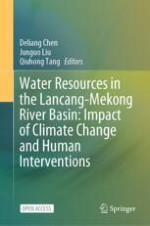Open Access 2024 | Open Access | Book

Water Resources in the Lancang-Mekong River Basin: Impact of Climate Change and Human Interventions
Editors: Deliang Chen, Junguo Liu, Qiuhong Tang
Publisher: Springer Nature Singapore
Open Access 2024 | Open Access | Book

Editors: Deliang Chen, Junguo Liu, Qiuhong Tang
Publisher: Springer Nature Singapore
This open access book provides a comprehensive, up-to-date picture of the current state of knowledge covering climate change, surface water change, arsenic pollution, water utilization, water-food-energy nexus, water related hazards, water management, and water governance in the Lancang-Mekong River Basin. Considering the widely concerned fact that the climate change and human intervention induced impacts on water will bring unprecedented threats to human societies and ecosystems, the book intends to support UN’s sustainable development goals through sustainable use of water by providing the most accurate and updated information on climate and water changes in a consistent way. Underlying all aspects of the book is a strong commitment to assessing the science comprehensively, without bias and in a way that is relevant to policy but not policy prescriptive. It can provide implications to support decision-makers and stakeholders for integrated water resources management and sustainable development at all levels.